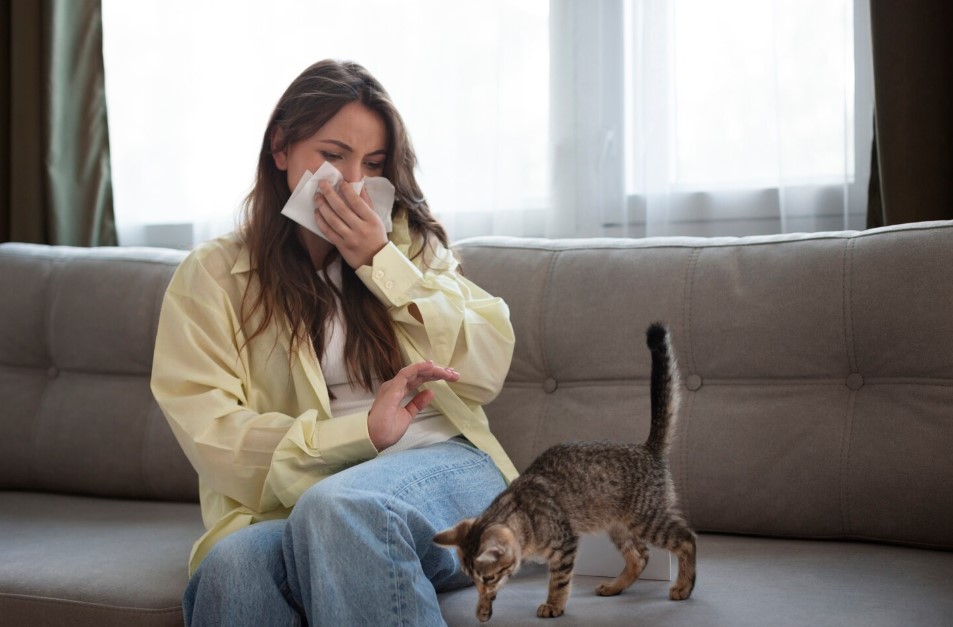
Living with pets brings joy, companionship, and a sense of comfort to any home. But as much as we love our furry friends, they can introduce dander, hair, odours, and even allergens that affect indoor air quality. Whether you live in a house, a compact inner-city unit, or pet-friendly apartments, keeping the air clean is essential for your health and your pet’s well-being. With a few proactive habits and the right tools, you can create a safe, fresh, and breathable living environment for everyone at home.
Understanding Air Quality Concerns When You Have Pets
Pets naturally shed dander—tiny flakes of skin—that can trigger allergies or respiratory issues. Their fur also traps dust, pollen, and pollutants from outdoors, which then settle inside your home. Add to that the odours from litter boxes, pet beds, and occasional accidents, and maintaining clean indoor air becomes a daily priority.
These factors don’t necessarily mean you need to compromise on comfort or cleanliness. Instead, they highlight the importance of proper ventilation, regular cleaning, and smart home habits.
Regular Grooming Makes a Huge Difference
One of the most effective ways to improve air quality starts with your pet. Regular grooming reduces the amount of loose fur and dander circulating around your home. Brushing your pet frequently, especially during shedding seasons, helps control the spread of allergens.
Bathing your pet as recommended by your veterinarian also minimises odours and reduces allergens in the home. For breeds that shed heavily or pets with long fur, professional grooming every few months can further maintain cleanliness.
By focusing on grooming, you address air quality issues at the source rather than dealing with the aftermath.
Keep Your Home Clean and Dust-Free
Even with regular grooming, pet fur and dander will still accumulate. Consistent cleaning routines help ensure that these particles don’t linger in the air or settle on surfaces for too long.
Here’s how you can maintain a clean home:
If you live in pet-friendly apartments where space can be tight, maintaining a strict cleaning routine becomes even more important because particles circulate more easily in smaller areas.
Ventilation Is Your Best Friend
Good airflow is vital for keeping indoor spaces fresh. Open windows daily, even for short periods, to let stale air out and bring fresh air in. If you live in a high-rise or a place where opening windows is limited, consider using ceiling fans, exhaust fans, and portable air purifiers to keep air moving.
Air purifiers with HEPA filters, in particular, can trap allergens, bacteria, and fine particles floating in the air. Run them in areas where your pets spend the most time, like the living room or bedroom. Some purifiers also come with carbon filters, which help eliminate strong odours from litter boxes and pet areas.
Clean or replace HVAC filters every one to three months, depending on how many pets you have and how much they shed.
Create Pet-Free Zones at Home
Designating certain areas as pet-free—such as bedrooms—can significantly improve air quality, especially for those with allergies. This gives you at least one clean, breathable space to retreat to when needed.
You can use baby gates or simply train your pet to stay out of specific rooms. Providing comfortable and appealing pet-designated spaces encourages them to stay where they belong.
Manage Odours Before They Spread
Odours are a natural part of living with pets, but they don’t have to overwhelm your home.
Try these simple odour-control strategies:
Addressing odours promptly prevents them from lingering and impacting overall air quality.
Choose the Right Home Setup
If you’re planning to move, consider accommodation options that support a healthy environment for pets. For instance, many pet-friendly apartments offer designs and materials that are easier to clean, such as tiled floors, ventilation systems suited for pet owners, or outdoor spaces for your pets to roam. Choosing the right living environment can reduce the effort needed to maintain fresh indoor air daily.
Conclusion
Maintaining good air quality when living with pets is completely achievable with consistent habits and practical solutions. By grooming your pets regularly, cleaning your home thoroughly, improving ventilation, controlling odours, and setting boundaries, you can create a cleaner and healthier space for both you and your furry companions.
Your pets bring love and joy into your home—and with a little care, you can ensure the air you breathe stays just as welcoming.